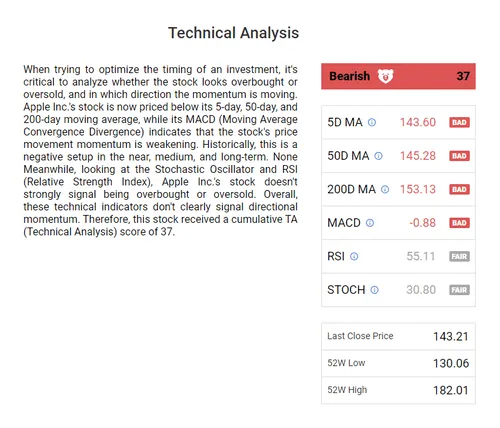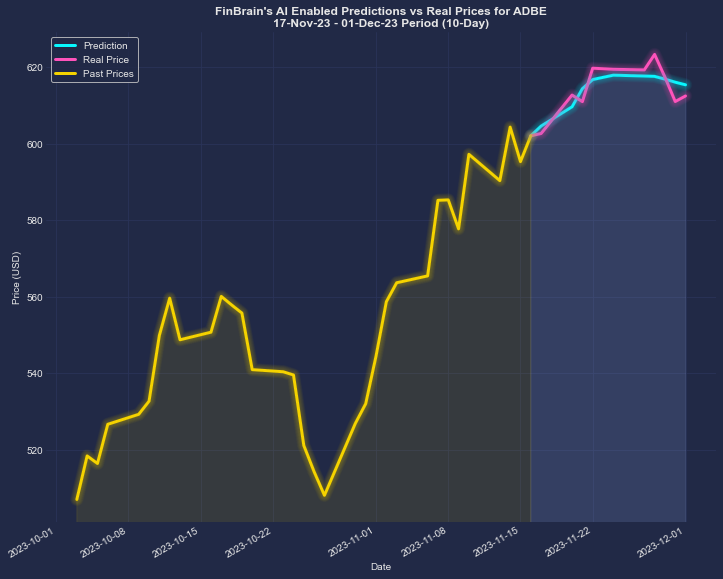20 Best Tips For Deciding On AI Stock Analysing Websites
20 Best Tips For Deciding On AI Stock Analysing Websites
Blog Article
Top 10 Suggestions On How To Assess The Integration Of Ai Platforms For Stock Prediction And Analysis And Their Compatibility
When evaluating AI trading platforms compatibility and integration are important aspects. An integrated platform that is seamless with your current tools and systems as well as workflows will significantly increase efficiency and productivity. Here are 10 best suggestions to help you assess the compatibility and integration between these platforms.
1. Check Brokerage Integration
Supported brokers: Ensure the platform is compatible with your preferred brokerage or trading account.
Trade execution: Check whether your platform allows the execution of trades directly via the integrated broker.
Account Synchronization: Make sure that your platform is able to sync real-time balances of your account along with positions and transaction histories.
2. Assessment of API availability
API access: Ensure the platform has an API (Application Programming Interface) that allows developers to develop customized applications and streamline workflows.
API documentation - Check that API's examples and usage scenarios are well documented.
Rate limits. Verify that the API you are considering has reasonable rates and is able to manage your volume of usage.
3. Assess Third-Party Tool Integration
Popular tools Look to see whether there are any connections between the platform and tools like Google Sheets, Excel, or trading robots.
Data export/import - Ensure that the platform allows for simple data export or import to/from other tools.
Extensions/Plugins: Check if the platform is compatible with plugins or extensions to provide additional features.
4. Test Compatibility with Operating Systems
Desktop compatibility: Ensure that the device is compatible with the preferred operating system (Windows, macOS or Linux).
Mobile compatibility. Verify if you are able to download the app for iOS or Android.
Web-based access (for additional flexibility) Check that the platform is accessible using the web browser.
5. Assess Data Integration Capabilities
Data sources - Make sure that the platform is linked to multiple sources of data (e.g. news feeds, market data, sentiment on social media).
Real-time feeds of data: Verify that the platform allows for real-time data integration to give the most current analysis.
Historical data import: Determine whether the platform allows import of historical data for backtesting or analysis.
6. Examine cloud and On-Premise compatible
Cloud-based Platforms: The platform must be accessible anywhere there is an internet connection.
On-premises solutions: Verify if you want to deploy the software on your premises.
Look for hybrid alternatives. It is a type of model that blends cloud and on-premises features.
7. Make sure that you have Cross-Platform Synchronization enabled.
Device synchronization: Make sure the platform is synchronized with settings and data across devices (desktop tablet, mobile).
Check for real-time updates to determine the changes made on one device will reflect immediately on the other.
Offline Access: Examine for any limitations on the functionality of the platform or access to data while it is offline.
8. Evaluation of compatibility with trading strategies
Automated or Algorithmic trading: Make sure that the platform for trading is compatible with these strategies.
Custom indicators: Make sure that your platform allows indicators or scripts that are unique to you.
Backtesting strategy: Find out whether your platform permits you to backtest trading strategies with historical data.
9. Review Security and Compliance
Data encryption - Make sure that your platform uses encryption for all data in transit as well as when it's in storage.
Authentication Check to determine if your platform is compatible with an authenticated method that is secure (e.g. 2-factor authentication).
Regulative compliance - Determine if the your website is in compliance with the applicable regulations, e.g. GDPR. FINRA. SEC.
10. Test Scalability, Performance, and Efficiency
Scalability: Ensure your platform can handle an increasing amount of data and users to ensure that it is able to expand with your company.
Performance during load conditions: Check whether the platform continues to be responsive during high-volatility market conditions.
Resources used - Ensure whether the platform is using system resources such as CPU, memory or bandwidth.
Bonus Tips:
Customer feedback: Read user reviews and testimonials to evaluate the capabilities to integrate the platform.
Trial period: Try the platform free of charge or download a demonstration to see how it integrates with your existing tools and workflows.
Customer Support: Ensure that the platform provides robust support to help with integration issues.
By following these tips, you can effectively assess the integration and compatibility of AI stock predicting/analyzing trading platforms and ensure that they integrate seamlessly with your existing systems, and improve your trading efficiency. Check out the best copyright ai bot tips for site recommendations including free ai tool for stock market india, ai trading platform, ai investment stock, using ai to trade stocks, ai for copyright trading, ai copyright trading, ai stock prediction, best ai stocks to buy now, best ai copyright, chart ai trading and more.
Top 10 Tips To Update And Maintain Ai Trading Platforms
The updates and maintenance of AI stock prediction and trading platforms are crucial to ensure that they are safe, effective, and in alignment with the evolving market conditions. Here are 10 guidelines on how to evaluate their maintenance and update practices:
1. Updates will be posted frequently.
Tip: Find out how often your platform is updated (e.g. monthly, quarterly weekly, quarterly).
The reason: Regular updates reveal active development and responsiveness towards market shifts.
2. Transparency in Release Notes
Check out the release notes for your platform to determine what improvements and changes were implemented.
The transparent release notes demonstrate that the platform is dedicated to continuous improvements.
3. AI Model Retraining Schedule
Tip: Find out how often AI models are trained with new data.
Why: Because markets change constantly and evolving, it is essential to update models in order to ensure they remain accurate and relevant.
4. Fixes for bugs and issue resolution
Tip: Find out how fast the platform reacts to problems or bugs users submit.
What's the reason? Rapid bug fixes will ensure that the platform is functional and secure.
5. Updates on Security
TIP: Make sure the security protocols of the platform are frequently updated to protect users' data and trades.
Cybersecurity is essential in financial platforms to prevent fraudulent activities and breaches.
6. Incorporating New Features
Check the platform to see whether it has introduced new features that are based on user or market feedback (e.g., enhanced analytics).
What's the reason? Feature updates demonstrate creativity and responsiveness to user demands.
7. Backward Compatibility
Tip: Make sure that the updates you install do NOT need major reconfigurations or interrupt the functionality of your current system.
Why is this: Backwards compatibility allows for a smooth experience for users when they are transitioning.
8. Communication with users during maintenance
Check out how your platform informs users of scheduled maintenance and downtime.
The reason: Clear communication minimizes the chance of disruption and boosts confidence.
9. Performance Monitoring & Optimization
TIP: Make sure the platform is constantly monitoring the performance metrics (e.g. precision, latency) and optimizes systems.
The reason is that ongoing improvement will ensure that the platform remains effective.
10. The compliance with regulatory Changes
Check whether the platform's features and policies have been updated to comply with the new financial regulations or the laws on data privacy.
Why: Conformity with the regulatory requirements is crucial to maintain user confidence and minimize legal risks.
Bonus Tip: User Feedback Integration
Examine if the platform incorporates feedback from users into the maintenance and update process. This shows a focus on the user and a commitment to improving.
When you look at all these factors, it is possible to make sure the AI stock trading platform you choose has been maintained properly. It should also be updated and adaptable to the changing dynamics of markets. Read the most popular best stocks to buy now for site info including ai bot for copyright trading, ai chart analysis, stocks ai, ai day trading, ai stock picker, stock market ai, ai bots for trading, best ai trading app, chart analysis ai, best ai stocks to buy and more.